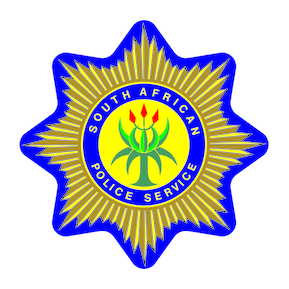We are all very aware that hijacking is one of the major crimes perpetrated against innocent people every single day. Knowing what to do if ever you were in such a situation could mean the difference between life or death. Here are some tips which the SAPS recommend.
DO'S
- Always travel with the car doors locked.
- Keep all windows closed or, at most, not open more than would allow a hand to fit through.
- Leave enough room between your car and the one in front to avoid being boxed in. Make sure you can see where the tyres of the other car make contact with the road.
- Remain in your car if it is hit from behind. Inspect any damage only once you are sure it is not a hijack attempt.
- Attract the attention of other motorists or pedestrians if you think you are in danger. You can use the hooter, flash your lights, put your emergency lights on or shout.
- Be aware of anybody who approaches your car or is loitering near traffic lights, stop streets, parking areas or your driveway.
- Constantly monitor what vehicles are travelling behind, ahead and next to you. More than one vehicle could be involved and they could be setting a trap to stop you. If you are suspicious of vehicles around you take (responsible) action to get out of the situation.
- If you suspect that you are being followed, you should ideally drive to the nearest police station. If this is not possible, drive to another safe place but don't go home.
- If approached by a suspicious -looking person, especially at night or in lonely areas, drive off quickly from a stop street or intersection, always heeding traffic danger, Skipping a stop sign or red light remains an offence and the onus is on you to prove that your action was in self-defence.
- At unusual or unexpected roadblocks, keep windows closed and doors locked and ask for the police or traffic officer's identity card. Show your identity document to them through the window. Trust works both ways. The same goes for being stopped by traffic officers at speed traps.
- On long journeys only stop overnight at safe places. Parking next to the road or in a parking area overnight is not safe.
- Report any suspicious looking strangers and vehicles to the police. Give a description of the occupants and their vehicle.
DONT'S
- Don't stop at the scene of an accident unless you are convinced it is genuine. Accidents can be set up in the hope that you will stop to assist. Sometimes a "body" is placed next to the road. Rather drive on and report the incident at the nearest police station. Slowing down too much may also make you vulnerable.
- Don't enter your garage or a parking area if you believe you are being followed. Drive to the nearest police station.
- Don't stop if, for example, a passer-by indicates that your car has a flat tyre or other defect. Drive to the nearest service station or safe area and check it there. It is a good idea to carry a product that temporarily seals any puncture and inflates the tyre.
- Don't tell strangers of your movements or plans.
- Don't pick up hitchhikers or unknown passengers.
- Don't leave your car door open and the engine running while opening your garage door or gates - criminals can act quicker than you'd expect.
- Don't be distracted by people handing out flyers at intersections or buy items, such as flowers and newspapers, from unfamiliar vendors.
SURVIVING A HIJACKING
- Regardless of the sort of crime and the criminals intentions, the situation is an explosive one in which you both have one thing in mind: survival.
- Hijacking involve planning and the criminals are likely to have more experience in such situations, thus more control over you and themselves.
- A hijacking is usually over in a matter of seconds or minutes but it is one of the most frightening experiences one can go through. Try your utmost to stay calm. Listen to the hijackers and do as they tell you and you have a greater chance of surviving.
DURING A HIJACKING
- Here are some tips on getting through the ordeal alive:
- Your life and those with you must be your priority. Resisting the hijackers may cause then to become violent or even deadly. Remember: possessions can be replaced, a life cannot.
- The hijackers are probably just as scared and nervous as you are. They may event be under the influence of drugs or alcohol which may make their actions event more unpredictable.
- Try not to panic and do anything the hijackers may not be expecting. Do not scream or make sudden movements, such as motioning with your hands.
- Avoid eye contact with them,
- Keep your hands where the hijackers can see them, ideally at chest level. This will assure them that you are not reaching for a weapon. Do not raise your hands above your head as they may think you are attracting attention of other people.
- If they order you out of the car wait fro them to open the door or, if they order you to, do it slowly with one hand, keeping the other where they can see it, Also undo your seatbelt with one hand, preferably the hand furthest from the clip by extending your arm over your body (if it is on your left, use ;your right hand).
- Slowly move away from the car so that you cannot be perceived as a threat to them.
- Listen carefully to and make sure you understand what the hijackers are saying and follow their orders.
- Quietly but clearly assure the hijackers that they can take the car.
- Do not reach for or motion towards items they may demand such as wallets, briefcases and cell phones. Rather tell them where they are and wait for them to get them themselves or they may tell you to hand them over.
- Be honest with hijackers. For example, if you have a firearm on you and they ask, tell them you have. Finding out or suspecting you have lied to them may unsettle them and lead to them becoming violent. Tell them honestly how to deactivate any alarms or immobilisers or do it yourself as ordered.
- Try and concentrate on the possibility of later identifying the hijackers. Make mental notes of how many there are, what they are wearing, their ages, and any facial or other physical characteristics. However, do not stare at the hijackers; try not to be obvious. To them this means that you will later be able to identify them and be evidence against them and they could become violent or be less hesitate to leave soon.
- Hijackers may not notice a sleeping baby in the back seat. If this is the case, tell them and point out that the child is not a threat and will make things more difficult for them. Never move to release the child without them saying you may. Do the same if a pet is in the car but do not push the point to where your life may be threatened at the expense of an animal.
- If ordered to lie down, do so and remain there with your head down, do so and remain there with your head down. Do not watch them. Stay still until you are sure they have left and only then go for help.
- The hijackers may drive off with you or you may event be ordered to drive. If you are driving, do so responsibly and do not do anything out of the ordinary. Always remain quiet unless you need to reply to a question or clarify an order. Remember to be honest with them.
- Once you have been released make sure that you are out of harm's reach before moving to get help.
AFTER A HIJACKING
Get help as soon as the hijackers have left you and immediately report it to the police. The Police have a greater chance of catching the criminals while they are on the move in your car.You experience severe trauma by a hijacking, trauma that can manifest itself in many different ways soon or long after the incident. You need to get professional counselling to help you process what happened and cope with it emotionally. Seek help within hours of the hijacking. Do not fool yourself into thinking you'll "get over it".
Remember that you are not to blame for anything that happened. Criminals look for new opportunities and situations that make their potential victims vulnerable, and develop new techniques to get our vehicles.
CAR HIJACKING FOOTAGE
Find the latest hijack hotspots in Johannesburg and Pretoria as supplied by eBlockwatch and SAPS:
Johannesburg:
- The William Nicol Drive offramp from the N1 from the Sandton side.
- The corner of Old Pretoria Road and 1st Avenue in Alexandra.
- New Road offramp in Midrand.
- Riviera Road offramp near Killarney Mall.
- Intersection of Christiaan de Wet Road and Wilgerood Road in Roodepoort.
- All the traffic lights along Louis Botha Avenue between Alexandra and Hillbrow.
- Parkwood and Saxonwold (Rosebank precinct).
- Upper Houghton and Killarney (Hillbrow precinct).
- Between 10th and 11th avenues and 4th and 7th avenues in Parkhurst (Parkview precinct).
- Glenhazel, Lombardy East and Sandringham (Sandringham precinct).
- Orange Grove and Highlands North (Norwood precinct).
- Yeoville, Bellevue and Bellevue East (Yeoville precinct).
- Wynberg, Bramley, Marlboro and Kew (Bramley precinct).
Pretoria:
- The Atterbury Road offramp from the N1 in Menlyn.
- Lynnwood Road offramp on the N1.
- John Vorster Drive offramp from the N1 in Lyttelton.
- Jean Avenue offramp from the R28 in Centurion.
- Rigel Avenue offramp from the N1 in Erasmuskloof.
- Corner of University Road and Lynnwood Road in Hatfield.
- The traffic lights along Walker Street in Sunnyside.
- The Lynnwood Road and Hans Strijdom Drive intersection in Garsfontein.
- The traffic lights along Nelson Mandela Drive in Sunnyside.
- The traffic lights along Simon Vermooten Road in Silverton.
- Along Beyers Naude Drive and Paul Kruger Street in Wonderboompoort.
- Nelson Mandela Drive, Duncan Street and Walker Street in Sunnyside.
- The R55 in Erasmia.
- Burnett Street, Hilda Street and the Atterbury Road offramp in the Brooklyn area.
- Delfi Avenue and Garsfontein Road in Garsfontein.
FOR ALL OF YOUR SAFETY AND SECURITY NEEDS, PLEASE FEEL FREE TO CONTACT US AT EC SECURITY AND OUR TRAINED PROFESSIONALS WILL ASSIST AND ADVISE YOU





0 comments:
Post a Comment